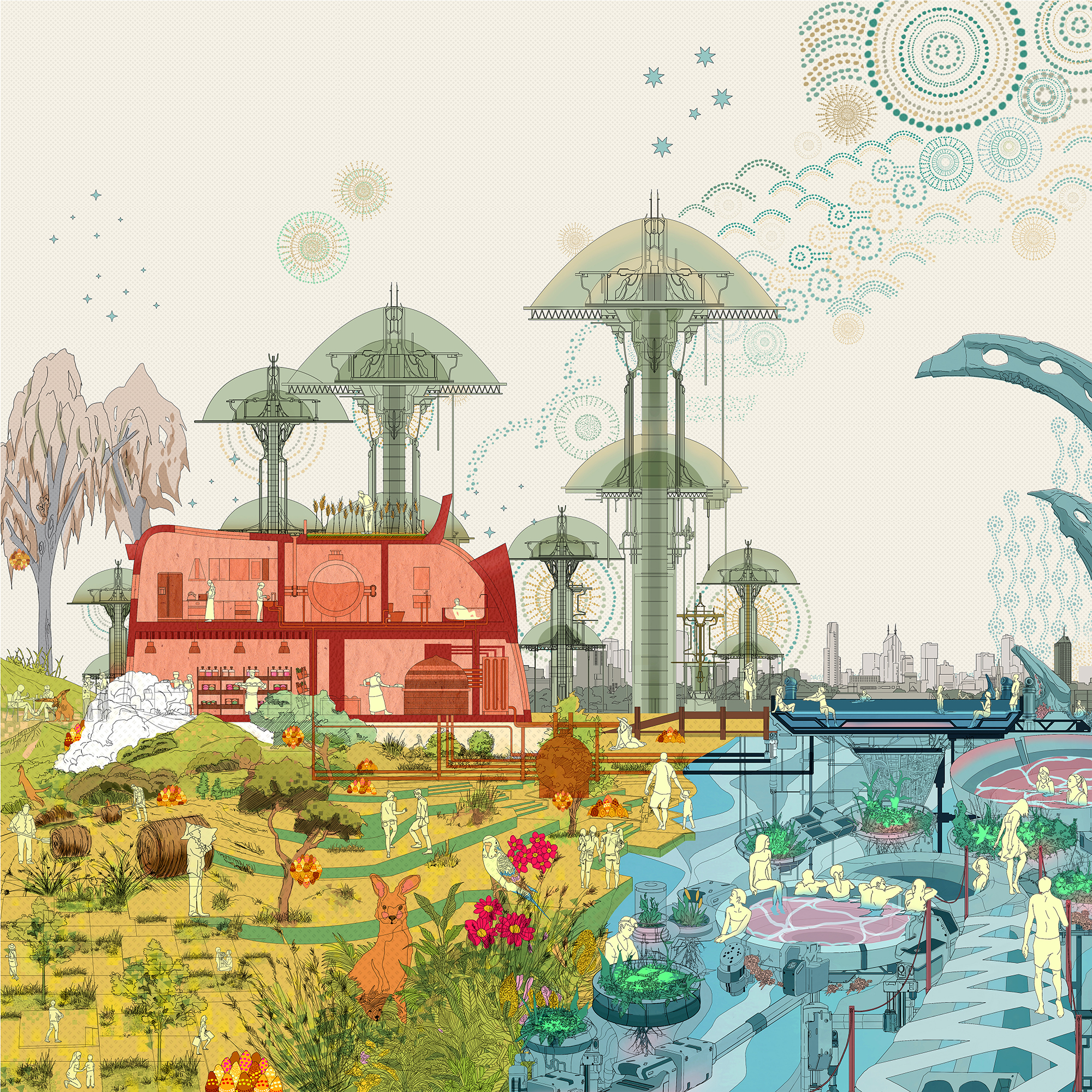Urban Grassland
Joo Liew, Yukyee Chan, Yangfan Pan
The Urban Grassland intends to provide environments that will enhance the quality of life via re-introduction of the Indigenous Australian landscape into urban Melbourne. The landscape offers recreational opportunities such as traditional gardening and habitat for smaller endangered species that have lost their habitats to deforestation, fires and urbanization. Recreation such as gardening, helps encourage collaboration within the community to grow and sustain their own food and some medicinal sources such as vegetables, herbs and honey, in order to create a thriving community wherein both native animals and people can once again live in symbiosis without destruction toward one another. Food sustainability and a cyclical water system is an integral part of the Grassland, working to enhance the growth of vegetation. Potentially, species that can be provided for are the Greater Glider, Orange-bellied parrot etc. With the loss of native plants from the original grasslands, proceeded the local extinction of native animals.
To increase amenity safety, we make use of unused vacancy and lesser traffic to drastically reduce use of vehicles. The Indigenous landscape has been ruined by rapid urbanization and consequences in damage to the original grasslands. It will integrate specific Indigenous grasses as well as types of native eucalypt to not only form partial boundaries that encourage social distancing during a pandemic, including harvesting food sources such as grains and breads. The grass which withstood many bushfire disasters was the Kangaroo grass. Seed harvests accompanied by the science of baking allows this grass to be grounded into a paste or flour, to specifically bake new bread, mamadyang ngalluk. With high adaptability, the grass thrives in drought and low maintenance and extends its growth from the water banks toward fields and forest horizons together.
To maintain a hydro-environment for the grassland, the cyclical water system can be sustained via heat from bakeries. This can be used for electricity through thermoelectric generators or to warm bathing pools for recreational or hydrotherapy purposes for the older/vulnerable population of the community. The water of the baths can be recycled into the stormwater and/or greywater systems, for the plants. Support systems include wave generators, creating hydroelectricity to support the power source of the bathing pools. Solar-powered components assist in maintenance and growth of the rooftop gardens. The cycle of growth and enhancement, from decomposition and collection, forms a continual metabolic relationship between users and the Urban Grassland. Ultimately, enabling the community to lean toward practices of pragmatic acceptance and radical engagement which reassures a positive outlook for future survival.
